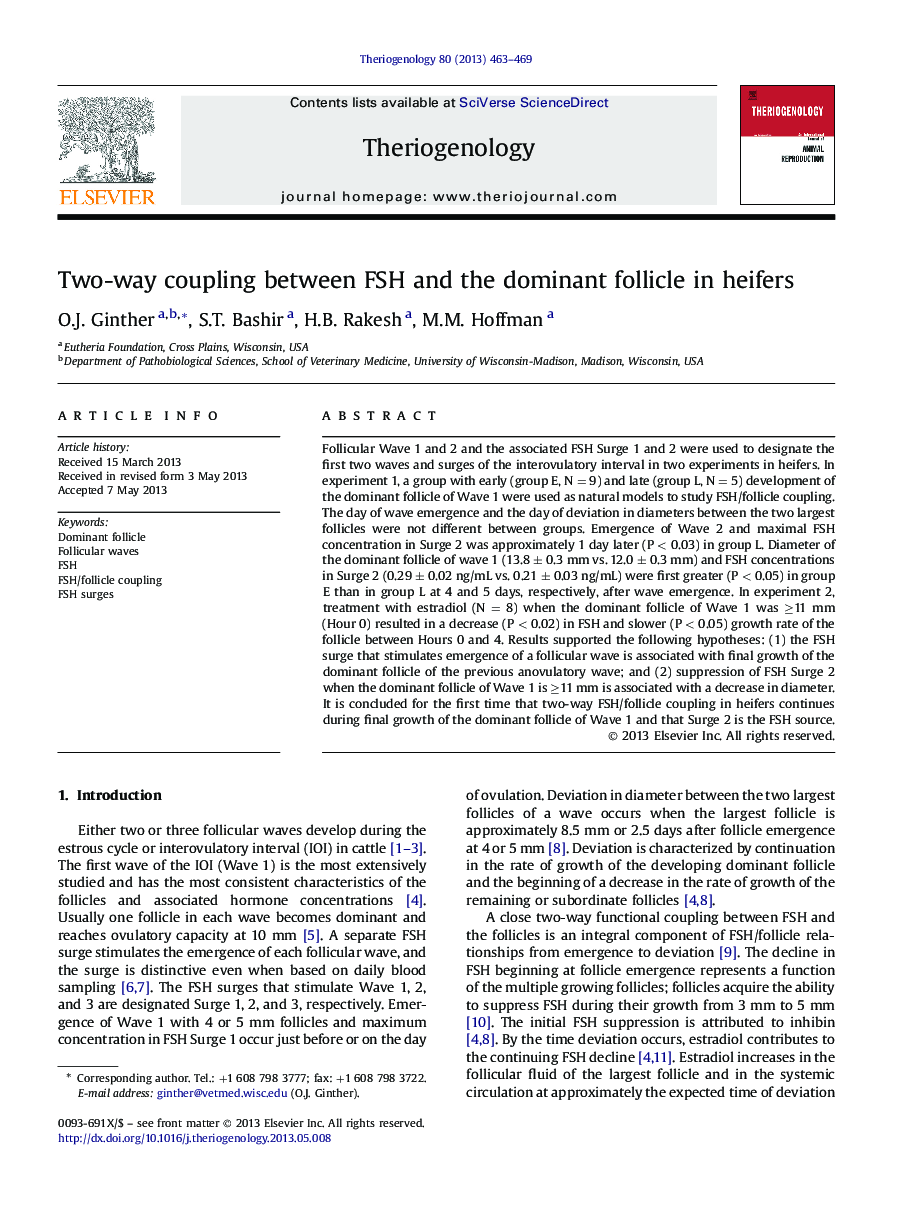| کد مقاله | کد نشریه | سال انتشار | مقاله انگلیسی | نسخه تمام متن |
|---|---|---|---|---|
| 2095309 | 1082097 | 2013 | 7 صفحه PDF | دانلود رایگان |

Follicular Wave 1 and 2 and the associated FSH Surge 1 and 2 were used to designate the first two waves and surges of the interovulatory interval in two experiments in heifers. In experiment 1, a group with early (group E, N = 9) and late (group L, N = 5) development of the dominant follicle of Wave 1 were used as natural models to study FSH/follicle coupling. The day of wave emergence and the day of deviation in diameters between the two largest follicles were not different between groups. Emergence of Wave 2 and maximal FSH concentration in Surge 2 was approximately 1 day later (P < 0.03) in group L. Diameter of the dominant follicle of wave 1 (13.8 ± 0.3 mm vs. 12.0 ± 0.3 mm) and FSH concentrations in Surge 2 (0.29 ± 0.02 ng/mL vs. 0.21 ± 0.03 ng/mL) were first greater (P < 0.05) in group E than in group L at 4 and 5 days, respectively, after wave emergence. In experiment 2, treatment with estradiol (N = 8) when the dominant follicle of Wave 1 was ≥11 mm (Hour 0) resulted in a decrease (P < 0.02) in FSH and slower (P < 0.05) growth rate of the follicle between Hours 0 and 4. Results supported the following hypotheses: (1) the FSH surge that stimulates emergence of a follicular wave is associated with final growth of the dominant follicle of the previous anovulatory wave; and (2) suppression of FSH Surge 2 when the dominant follicle of Wave 1 is ≥11 mm is associated with a decrease in diameter. It is concluded for the first time that two-way FSH/follicle coupling in heifers continues during final growth of the dominant follicle of Wave 1 and that Surge 2 is the FSH source.
Journal: Theriogenology - Volume 80, Issue 5, 15 September 2013, Pages 463–469